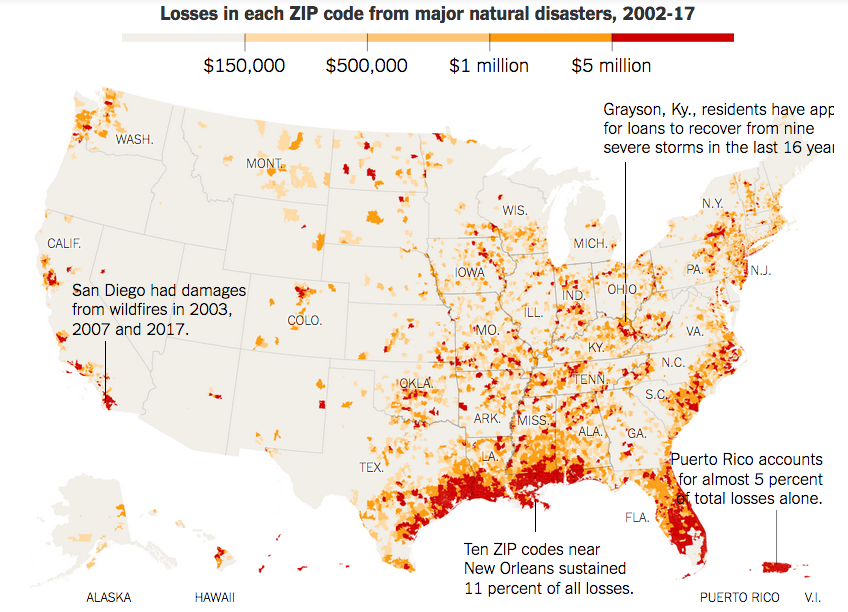In the last 16 years, parts of Louisiana have been struck by six hurricanes. Areas near San Diego were devastated by three particularly vicious wildfire seasons. And a town in eastern Kentucky has been pummeled by at least nine storms severe enough to warrant federal assistance.
These places are part of a small fraction of the United States that has sustained most of the damage from major natural disasters, forming a pattern of destruction concentrated in particular areas.
About 90 percent of the total losses across the United States occurred in ZIP codes that contain less than 20 percent of the population, according to an analysis of data from the Small Business Administration.
The federal government, through disaster relief programs and flood insurance, subsidizes the cost of rebuilding in areas hit repeatedly by storms, floods and fires. Critics say that encourages too much development in those regions, wasting tens of billions of dollars in tax money and endangering lives.
Christina DeConcini, the director of government affairs at the World Resources Institute, said that federal programs do not adequately emphasize adapting to the risks posed by climate change. She said that instead of just being responsive, the government should stress building for resilience against disasters.
Some residents continue living in disaster-stricken areas because they cannot afford to leave. Others rebuff appeals to resettle, citing deep family ties or a sense of fatalism. Rather than move the town, “it’s easier to throw your hands up and say, ‘Forget it,’” said Linda Lowe, the president of a historical society in flood-prone Olive Hill, Ky.
Read full article




